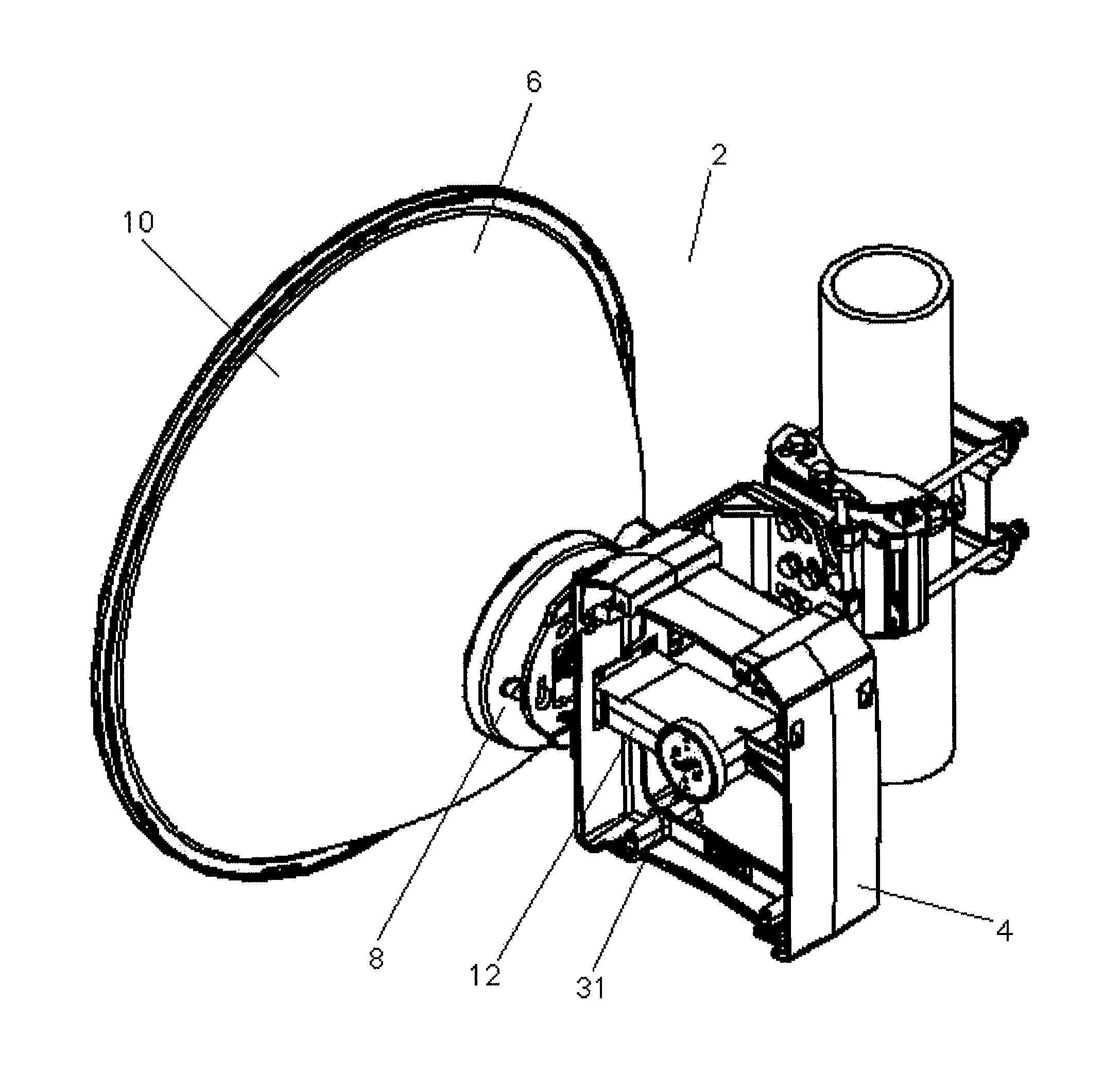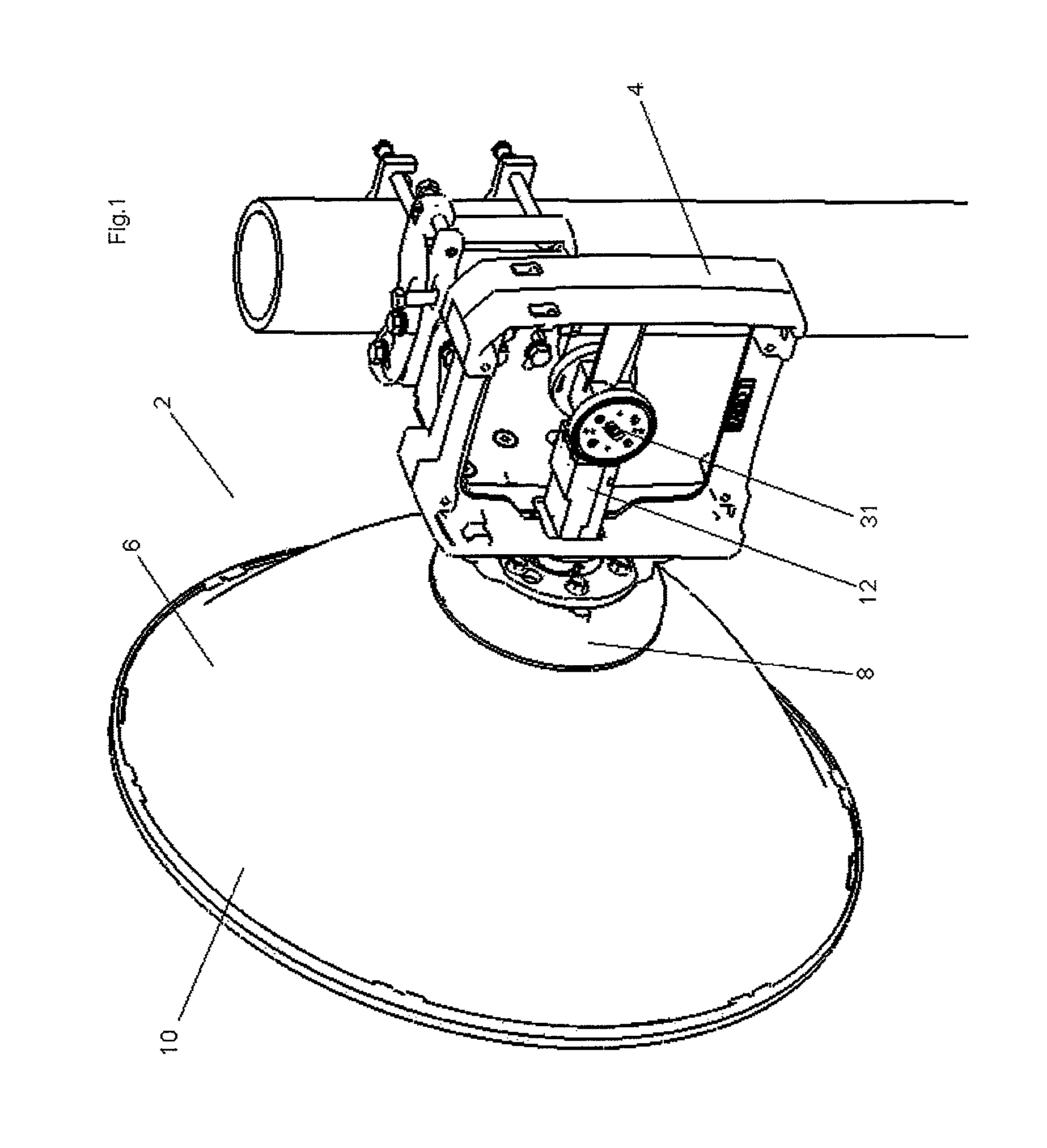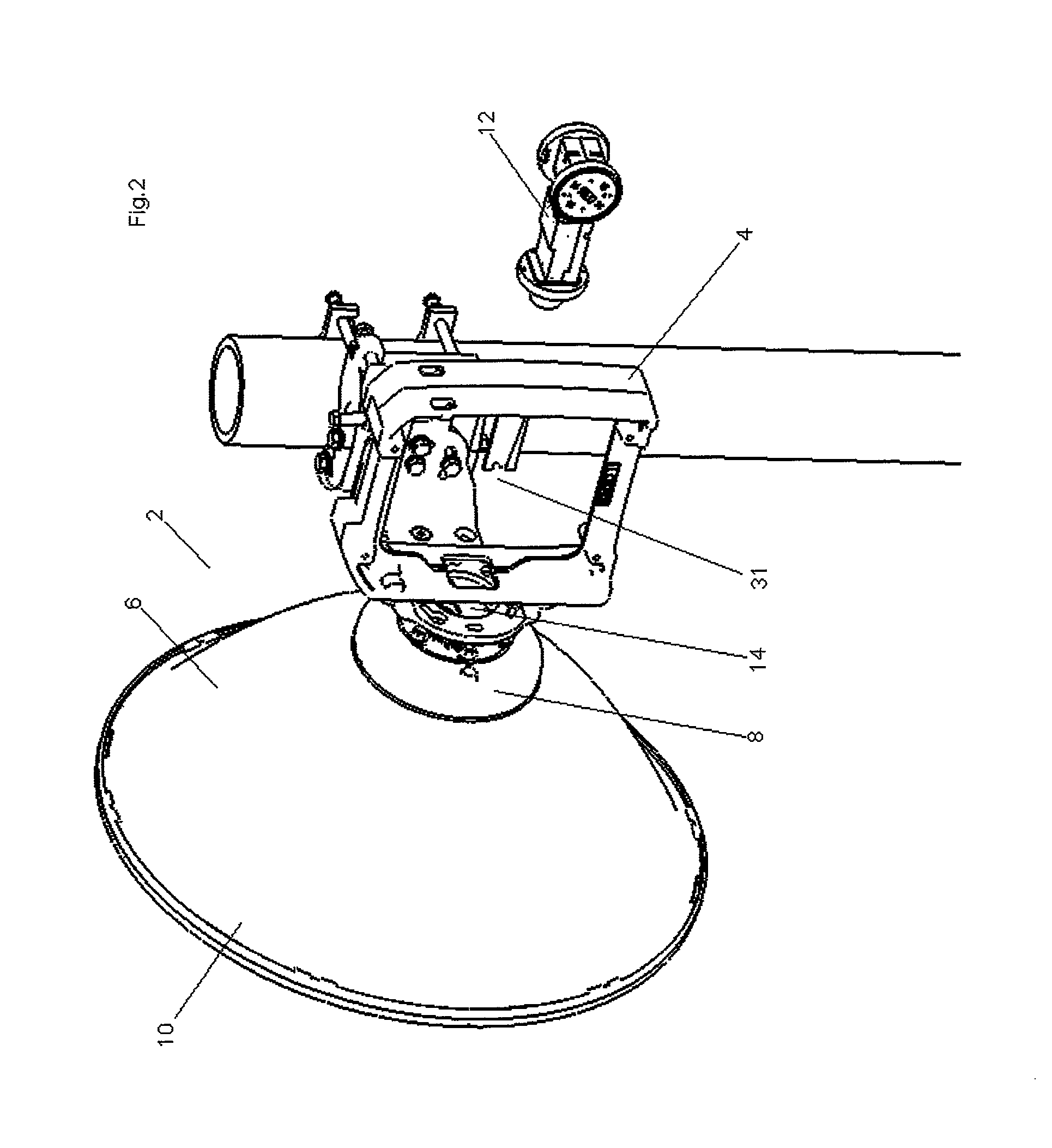Dual polarized reflector antenna assembly
a dual-polarized reflector and antenna technology, applied in the direction of antennas, antenna details, electrical equipment, etc., can solve the problems of depolarization becoming an additional factor, reducing the electrical performance of each signal, and affecting the overall performance of the communication link
- Summary
- Abstract
- Description
- Claims
- Application Information
AI Technical Summary
Benefits of technology
Problems solved by technology
Method used
Image
Examples
first embodiment
[0032]In a dual polarized reflector antenna assembly 2, as shown in FIGS. 1 and 2, with transceivers (alternatively separate receivers and / or transmitters) removed for clarity, a transceiver support bracket 4 is coupled proximate the back side of a reflector dish 6, secured to a feed hub 8 of the reflector antenna 10. An OMT / feed assembly 12 may be coupled, for example, to a feed port 14 of the feed hub 8 at a proximal end 16 and supported by the transceiver support bracket 4 at a distal end 18.
[0033]One skilled in the art will appreciate that proximal end 16 and distal end 18 are end designations provided for ease of explanation of element orientation and / or interconnection. Each of the elements within an assembly also has a proximal end 16 and a distal end 18, that is, the ends of the element facing the proximal end 16 or distal end 18, respectively, of the associated assembly.
[0034]As best shown in FIG. 3, the OMT / feed assembly 12 includes a circular to square waveguide transitio...
second embodiment
[0043]In a dual polarized reflector antenna assembly 2, as shown in FIGS. 8 and 9, with the transceivers (alternatively separate receivers and / or transmitters) removed for clarity, a transceiver support bracket 4 is coupled proximate the back side of a reflector dish 6, secured to a feed hub 8 of the reflector antenna 10. An OMT / feed assembly 12 is coupled to a feed port 14 of the feed hub 8 at a proximal end 16 and supported by the transceiver support bracket 4 at a distal end 18.
[0044]As best shown in FIG. 10, the OMT / feed assembly 12 includes a circular to square waveguide transition 22, an OMT 26 and polarization adapters 28 coupled in-line to form a signal path from the feed port 14 of the feed hub 8 to input ports of the transceivers.
[0045]As shown in FIGS. 11 and 12, the OMT 26 may be formed from two OMT halves 46 also mating together via key features 38 such as pins and sockets and / or a plurality of fasteners 40 such as screws or the like. The OMT 26 separates and transition...
third embodiment
[0049]In a dual polarized reflector antenna assembly 2, as shown in FIGS. 13 and 14, transceivers (alternatively separate receivers and / or transmitters) removed for clarity, a transceiver support bracket 4 is coupled proximate the back side of a reflector dish 6, secured to a feed hub 8 of the reflector antenna 10. An OMT / feed assembly 12 is coupled to a feed port 14 of the feed hub 8 at a proximal end 16 and supported by the transceiver support bracket 4 at a distal end 18.
[0050]As best shown in FIG. 15, the OMT / feed assembly 12 includes a feed port adapter 50, a circular waveguide 52, circular to square waveguide transition 22, an OMT 26 and polarization adapters 28 coupled in-line to form a signal path from the feed port 14 of the feed hub 8 to input ports of the transceivers.
[0051]As shown in FIGS. 16 and 17, the OMT 26 may be formed from two OMT halves 46 also mating together via key features 38 such as pins and sockets and / or a plurality of fasteners 40 such as screws or the l...
PUM
 Login to View More
Login to View More Abstract
Description
Claims
Application Information
 Login to View More
Login to View More - R&D
- Intellectual Property
- Life Sciences
- Materials
- Tech Scout
- Unparalleled Data Quality
- Higher Quality Content
- 60% Fewer Hallucinations
Browse by: Latest US Patents, China's latest patents, Technical Efficacy Thesaurus, Application Domain, Technology Topic, Popular Technical Reports.
© 2025 PatSnap. All rights reserved.Legal|Privacy policy|Modern Slavery Act Transparency Statement|Sitemap|About US| Contact US: help@patsnap.com



